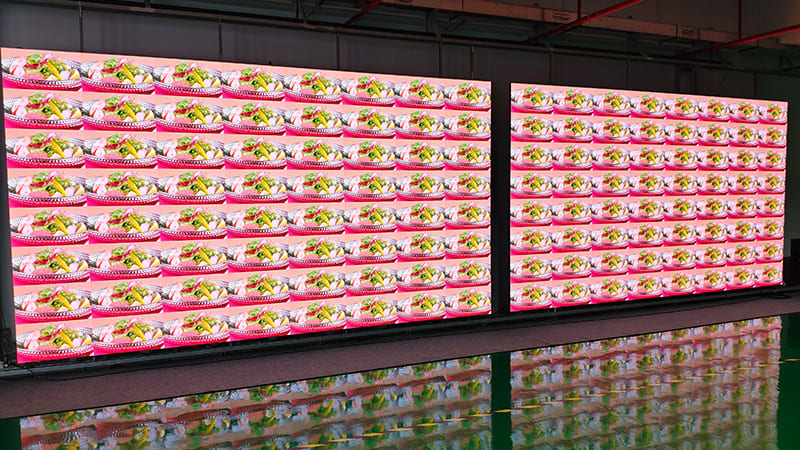Understanding the Importance of LED Display Aging Test Before Market Release
LED display screen aging is a critical key test procedure for LED electronic display screen modules before release from the factory. All display screens must go through the aging test before they can be used in applications for the market.
Aging tests simulate the long-term working condition of display screens to examine whether they would show any abnormality. This is an important approach to ensure electronic devices' stability. Its main roles are: first, to erase potential defects at the initial stage. According to power-on aging, defective products such as false soldering, contact failure, and abnormal chips in components can be effectively exposed. Secondly, ensure the module is stable in principal parameters such as brightness, color consistency, and grayscale performance. Thirdly, simulate long-term usage conditions to best feel the attenuation of leds to light, the heat-producing situation of driver ics, and the power supply stability. Fourth, meet customers' or strict requirements on LED display screen reliability in industry standards such as VESA and IEC 62341. The LED aging test is a response strategy planned according to the nature of the product failure rate curve - the bathtub curve, thereby improving the overall product reliability. Aging-treated LED products not only have the capability to enhance their own performance but also to ensure stable performance during subsequent use. Constant current aging is most suitable among the various aging methods for the current working conditions of leds and is the most scientific method of aging currently. In addition, overcurrent aging impact is a novel method used by manufacturers, carries out aging testing by using an adjustable frequency constant current source. It can diagnose the quality and lifespan of leds within a comparatively short period of time and remove many potential problematic leds that are difficult to locate using conventional aging. It must be noted that constant current source is a type of power supply device that always maintains a constant current.

Aging test project process:
- Install the module onto the aging rack and mount the power supply and signal control system (e.g., the sending card and receiving card).
- Employ a constant temperature and humidity chamber (optional) to supply high temperature/low temperature/high humidity environments.
- Adjust signal sources (such as video generators), luminance meters, and color analyzers. Light the module and check for obvious faults such as dead lights, dark spots, and color block unevenness.
- Record the initial brightness, color coordinates, and white balance data.
- The module must be powered on for 2 to 4 hours continuously to check for any instant faults (such as flicker or dead lights).
- Attenuation detection of LED brightness and ability for power load with all-white.
- Color gradient verification for gray-scale transition and color constancy.
- Flashing (1-10Hz) tests response time and driver IC stability.
- Checkerboard/scrolling captions: identify bad pixels, crosstalk, and ghosting issues.
- Test the weather resistance of the module by a cycle of high temperature and high humidity (60°C/85%RH) → normal temperature → low temperature (-20°C).

With standardized aging processes applied, the quality of the LED modules leaving the factory can be significantly enhanced and the customer return rate reduced. And adjust parameters in a loose way along with the actual usage environment (for example, outdoor billboard screens need waterproofing enhancement, and UV aging tests).



